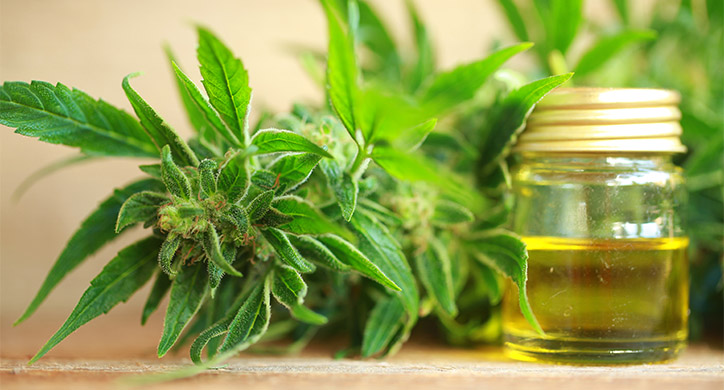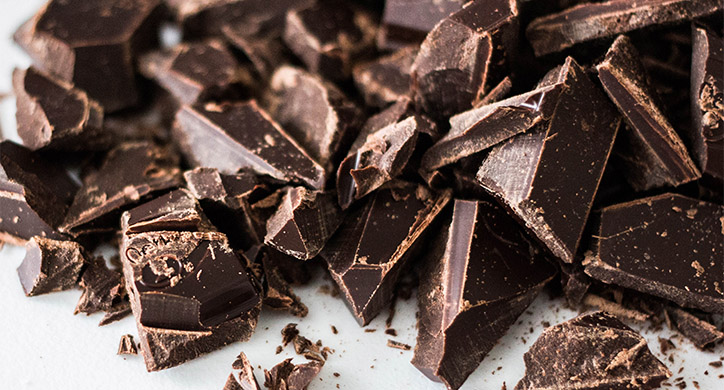On the run? Listen to our post!
Today’s demanding lifestyle has us frequently on our toes, waiting for the next hurdle to jump over. It is no wonder about 450 million people worldwide suffer from mental illness, chronic fatigue, as well as some serious neurodegenerative diseases.
Just like your body, your brain needs the right fuel to perform at its peak. Nootropics, a class of cognition-enhancing compounds, are hailed as the newest type of brain medicine and can be found in medicines, supplements, and foods. Early applications of nootropics include uses to improve mental and physical performance and boost memory, increase focus, and enhance creativity and motivation.
Nootropics: Natural or Synthetic?
These so-called “smart drugs” are a relatively new class of drugs. They are part of a category known as PIEDs, or Performance and Image Enhancing Drugs, and are broadly categorized into three groups:
- Stimulants, like amphetamines and methylphenidate, are synthetic drugs primarily prescribed to those diagnosed with Attention Deficit Disorders, given their effectiveness with improving cognitive function. These are only available by prescription in the U.S.
- Racetams, such as piracetam, are lab-made and can help our brain neurotransmitters, specifically glutamate and acetylcholine, function properly and effectively. They are known to boost memory in people with brain injuries, help with seizure control, depression, or age-related decline but do not affect otherwise healthy individuals.
- Natural Compounds found in whole foods and supplements, like caffeine, ginseng, and creatine, are over-the-counter nootropics that are among the most popular agents of neuroenhancement. They are a healthy way to help with brain function without the unwanted side effects if consumed in moderation.
At D2D, we are focusing on the fascinating group of natural compounds, which are found in whole foods or available over-the-counter. These nootropics provide myriad benefits when consumed in a healthful way. But be aware: researchers are still working to define what constitutes “a healthful way” to consume nootropics.
Given its recent increase in demand, what problem are we all trying to solve here? Do we have poor concentration, memory, and lack of energy because we are eating a diet full of fats, sugars, and salt rather than fresh fruits and vegetables? Or can we enhance our brain function just by increasing the consumption of healthy foods? We believe that for the best brain and body performance, you need a healthy diet with lots of variety.
Nootropic supplements are unregulated and lack sufficient approvals to confirm efficacy. So instead, let’s focus on the natural nootropics found in foods, herbs and drinks, and what their potential health benefits are.
With only a handful of high-quality studies and no FDA oversight for supplements, it’s difficult to make an informed decision. We need more clinical data to see if nootropics have a measurable and lasting cognitive effect.
So don’t fall for any brands that claim to be cure-alls – know the science and the proven benefits.
What We Do ‘Noo’
Nootropics found in foods affect certain neurotransmitters, such as dopamine, GABA, serotonin, and acetylcholine, in various ways. They can help increase blood flow to the brain, support neurotransmitter health, regulate the amount of specific neurotransmitters, and increase brainwave activity. These “smart foods” target metabolic or nutritional components of brain function. They deal directly with memory and attention to create a clear, efficient pathway for all signals to reach the intended neurotransmitters. When neurotransmitters can function at peak efficiency, the result is overall increased cognitive function.
Your Morning Nootropics
Many everyday whole foods contain varying amounts, as well!
Caffeine. Let’s start here — Caffeine is a natural nootropic found in coffee, cocoa, tea, and certain nuts, like kola and guarana. It is a compound often added to energy drinks and sodas and is the most widely consumed psychoactive substance worldwide.
An intake of 40 to 200 mg a day, or between one and two cups of coffee, can increase alertness and decrease reaction time. This is especially helpful for those who are feeling fatigued, which is why your 6 a.m. cup hits much differently than your 2 p.m. cup. However, too much caffeine will do more harm than good, causing jittery, anxious feelings.
While the nootropics in coffee block the effects of adenosine, a brain chemical that makes you feel tired, it can also trigger the release of adrenaline, which can cause anxiety and sleeplessness.
L-theanine. Teas containing L-theanine, such as green tea, matcha, and black tea, can help calm an overactive brain. Green tea contains about 5mg of L-theanine per cup, while matcha and black tea contain about 46mg per cup. What does it do? Several studies have concluded that this type of nootropic can have a calming effect, while simultaneously not causing drowsiness. In roughly two cups of brewed green tea, you can increase your brain’s alpha waves, which can promote creativity. L-theanine, when coupled with caffeine, is even more effective. Supplement companies often combine these nootropics to create performance-enhancing supplements.
Ginkgo Biloba. This plant has an extract in its leaves that may positively affect your brain function. Most commonly, ginkgo biloba is taken as a supplement to improve memory and mental processing functions in adults. This is because it helps increase blood flow to the brain, making neurotransmitters more high-functioning.

Making a Nootropic-rich Meal
By adding in various whole foods, like eggs, salmon, and blueberries, your brain gets a boost of nootropic compounds at every meal!
- Eggs are rich in choline. Choline can assist our brains with transmitting signals across our neuronal membranes. What in the world does that mean? Well, our bodies take in choline from eggs, and use it to produce a compound called acetylcholine. Acetylcholine aids the body in retaining memories and in achieving restful sleep. One egg provides 27% of your recommended daily value of choline!
- Spinach is another incredible brain-boosting resource. With nutrients like lutein and zeaxanthin, it can help with quicker mental recall and increased memory capacity. Furthermore, a cup of spinach a day is adequate for absorbing nutrients to increase performance.
- Salmon is a fatty fish that can improve one’s ability to send and receive messages in the brain. Because of its high DHA density and protein-packed profile, it helps keep the brain in tip-top shape. A 3-4 oz serving of salmon will cover your daily recommended intake.
- Lean meats contain creatine, an amino acid that helps your body produce protein. Once creatine enters your brain, it binds itself to phosphate to create a molecule that can fuel your brain’s cells to help improve short-term memory and increase reasoning skills. Studies show that ingesting just 5g of creatine per day will have cognitive benefits without any side effects.
- Turmeric, a long-used spice in Chinese medicine, also possesses incredible nootropic benefits. It helps trigger neurogenic creation and is often used to treat Alzheimer’s disease and stroke. About 2.5 grams a day is all it takes to capitalize on its benefits.
- Blueberries are another natural nootropic. Super-high in antioxidants like anthocyanins, blueberries help boost cognitive function and protect the brain from damage caused by aging, as it rids the brain of free radicals. 500 mg or 2 cups of blueberries is a sufficient amount for nootropic results.
- Dark chocolate is a flavanol-rich food made from cocoa beans. Cocoa beans increase blood flow to the brain, much like gingko biloba, and can actually trigger the production of new brain cells! Dark chocolate, made with 70% cocoa or higher, has shown to have these antioxidant effects.
Challenges of Nootropics
Addiction to nootropics is common, most typically in the stimulant or supplement category. But it also can be found in caffeine intake. Unfortunately, more is not always better, as in the example of nicotine. While nicotine can increase mental sharpness, its long list of side effects, including chest pains, headaches, abdominal discomfort, and anxiety and irritability, outweigh any potential positive benefits. The abuse of, or overuse of certain nootropics, like nicotine, amphetamines, or creatine, can cause severe dependence and significant health problems.
Let’s also not forget our golden rule here at D2D: variety and moderation.
Don’t go out and overload on blueberries and coffee thinking it will turn you into Einstein.
Choose a healthy diet with a variety of different foods including fish, berries, leafy greens, and protein. The emerging new field of nootropics will be exciting to watch unfold as new studies are published. However, to truly maximize cognitive function, you must also focus on sleep, exercise, and brain-building activities to keep your mind sharp, as found by an Oxford University meta-analysis study. Also, keep your body healthy by eating good-for-you calories, rather than processed, unhealthy ones.








 All vegetables are very important to ensure a balanced diet, but leafy greens especially have the vitamins and minerals needed to help protect us against Covid.
All vegetables are very important to ensure a balanced diet, but leafy greens especially have the vitamins and minerals needed to help protect us against Covid. Fermented foods
Fermented foods













 Alternatively, chronic inflammation, or inflammation that lasts for too long like heart disease, and obesity, can be harmful. Cortisol works the same way! When the levels of your stress hormone do not regulate, and don’t decrease after a stressful event has occurred, they remain too high. And if this happens for too long, it can be damaging and stressful on the body.
Alternatively, chronic inflammation, or inflammation that lasts for too long like heart disease, and obesity, can be harmful. Cortisol works the same way! When the levels of your stress hormone do not regulate, and don’t decrease after a stressful event has occurred, they remain too high. And if this happens for too long, it can be damaging and stressful on the body.



























 This was true for my stepmother’s father and uncle who were identical twins – obviously with the same DNA. Both Paul and Uncle Art have/had a gene that made them prone to heart disease. In 1998, they both had open-heart surgery. Afterwards, Paul has continued to take care of himself with diet and exercise. He also has a lot of love in his life with two adoring daughters, grandchildren, and a girlfriend (after his wife passed away). Art, on the other hand, was not quite as zealous about a healthy lifestyle. Uncle Art died in 2010. Meanwhile, Paul is steadily smiling, living, and dating his girlfriend at 101 years old!
This was true for my stepmother’s father and uncle who were identical twins – obviously with the same DNA. Both Paul and Uncle Art have/had a gene that made them prone to heart disease. In 1998, they both had open-heart surgery. Afterwards, Paul has continued to take care of himself with diet and exercise. He also has a lot of love in his life with two adoring daughters, grandchildren, and a girlfriend (after his wife passed away). Art, on the other hand, was not quite as zealous about a healthy lifestyle. Uncle Art died in 2010. Meanwhile, Paul is steadily smiling, living, and dating his girlfriend at 101 years old!
















































































































































































 Today’s milking machines can milk a cow in about 7 minutes. First, the cow’s teats are cleaned with an iodine and water solution, then dried. Then rubber-lined cups are attached to the teats, and milk will flow into the milk tank. The pumping action of the cups imitates a sucking calf so it does not hurt the cow.
Today’s milking machines can milk a cow in about 7 minutes. First, the cow’s teats are cleaned with an iodine and water solution, then dried. Then rubber-lined cups are attached to the teats, and milk will flow into the milk tank. The pumping action of the cups imitates a sucking calf so it does not hurt the cow.













































































































































